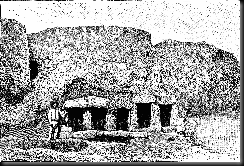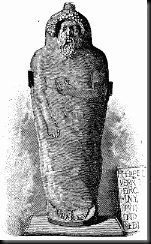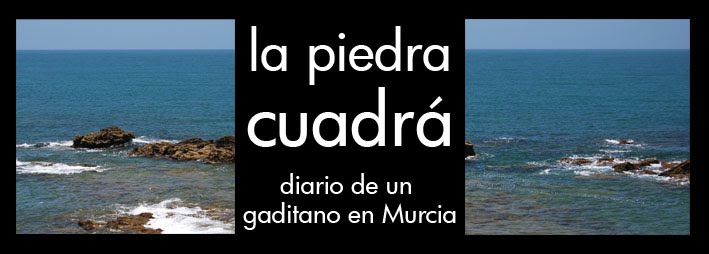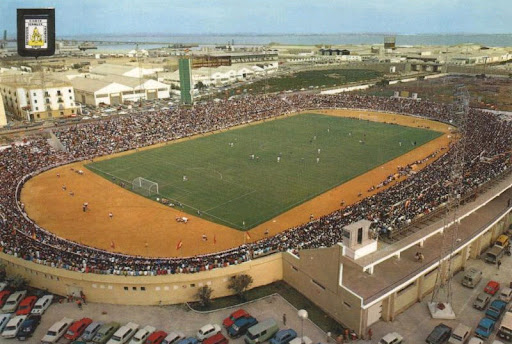Mañana van a hacer 30 años desde que se descubriera la Dama de Cádiz, el sarcófago femenino. Buscando por la red he encontrado este artículo escrito en una revista científica americana llamada GUTENBERG PROJECT, que no tiene desperdicio. Habla de los recientes descubrimientos fenicios en nuestra tierra.
Ahí os dejo, Cádiz “the pearl of the ocean and the silver cup”…
ARCHÆOLOGICAL DISCOVERIES AT CADIZ.
Those who have had the good fortune to visit Andalusia, that privileged land of the sun, of light, songs, dances, beautiful girls, and bull fighters, preserve, among many other poetical and pleasing recollections, that of election to antique and smiling Cadiz—the "pearl of the ocean and the silver cup," as the Andalusians say in their harmonious and imaginative language. There is, in fact, nothing exaggerated in these epithets, for they translate a true impression. Especially if we arrive by sea, there is nothing so thrilling as the dazzling silhouette which, from afar, is reflected all white from the mirror of a gulf almost always blue.
The Cadiz peninsula has for centuries been legitimately renowned, for, turn by turn, Phenicians, properly so called, Carthaginians, Romans, Goths, Arabs and Spaniards have made of it the preferred seat of their business and pleasure. In his so often unsparing verses, Martial, even, celebrates with an erotic rapture the undulating suppleness of the ballet dancers of Gades, who are continued in our day by the majas and chulas.

PHENICIAN TOMBS DISCOVERED AT CADIZ.
For an epoch anterior to that of the Latin poet, we have the testimony, among others, of Strabo, who describes the splendors, formerly and for a long time famous, of the temple of Hercules, and who gives many details, whose accuracy can still be verified, concerning various questions of topography or ethnography. Thus the superb tree called Dracæna draco is mentioned as growing in the vicinity of Gadeira, the Greek name of the city. Now, some of these trees still exist in certain public and private gardens, and attract so much the more attention in that they are not met with in any other European country. However, although historically Cadiz finds her title to nobility on every page of the Greek and Latin authors, and although her Phenician origin is averred, nowhere has such origin, in a monumental and epigraphic sense, left fewer traces than in the Andalusian peninsula. A few short legends, imperfectly read upon either silver or bronze coins, and that was all, at least up to recent times. Such penury as this distressed savants and even put them into pretty bad humor with the Cadiz archæologists.
To-day, it seems that the ancient Semitic civilization, which has remained mute for so long in the Iberic territory, is finally willing to yield up her secret, as is proved by the engravings which we present to our readers from photographs taken in situ. It is necessary for us to enter into some details.
In 1887 there were met with at the gates of Cadiz, at about five meters beneath the surface of the earth, three rude tombs of shelly limestone, in which were found some skeletons, a few small bronze instruments and some trinkets—the latter of undoubted oriental manufacture.
In one of these tombs was also inclosed a monolithic sarcophagus of white marble of the form called anthropoid and measuring 2.15 m. in length by 0.67 in width. This sarcophagus is now preserved in the local museum, whose director is the active, intelligent and disinterested Father Vera. Although this is not the place to furnish technical or scientific explanations, it will be permitted us to point out the fact that although it is of essentially oriental manufacture, our anthropoid has undoubtedly undergone the Hellenistic influence, which implies an epoch posterior to that of Pericles, who died in 429 B.C. The personage represented, a man of mature age with noble lineaments and aquiline nose, has thick hair corned up on the forehead in the form of a crown, and a beard plaited in the Asiatic fashion. As for the head, which is almost entirely executed in round relief, that denotes in an undoubted manner the Hellenistic influence, united, however, with the immutable and somewhat hierarchical traditions of Phenician art. The arms are naked as far as to the elbow, and the feet, summarily indicated, emerge from a long sheath-form robe. As for the arms and hands, they project slightly and are rather outlined than sculptured. The left hand grasps a fruit, the emblem of fecundity, while the right held a painted crown, the traces of which have now entirely disappeared. It suffices to look at this sarcophagus to recognize the exclusively Phenician character of it, and the complete analogy with the monuments of the same species met with in Phenicia, in Cyprus, in Sicily, in Malta, in Sardinia, and everywhere where were established those of Tyre and Sidon, but never until now in Spain.
On another hand, for those of our readers who are interested in archæology, we believe it our duty to point out as a source of information a memoir published last year by our National Society of Antiquaries. Let us limit ourselves, therefore, to fixing attention upon one important point: The marble anthropoid was protected by a tomb absolutely like the rude tombs contiguous to it.
The successive discoveries since the third of last January at nearly the same place, and at a depth of from 3 to 6 meters beneath the surface, of numerous Inculi absolutely identical as to material and structure with those of which we have just spoken, is therefore a scientific event of high importance. Those discoveries, which were purely accidental, were brought about by the work on the foundations of the Maritime Arsenal now in course of construction at the gates of Cadiz. Our Fig. 1 represents the unearthing of the loculi on the 14th of April, and on the value of which there is no need to dwell. As to the dimensions, it is easy to judge of these, since the laborer standing to the left of the spectator holds in his hand a meter measure serving as a scale. It will suffice to state that the depth of each tomb is about two meters, and that upon the lower part of three of the parallelopipeds there exist pavements of crucial appearance. Finally, nothing denoted externally the existence of these sarcophagi jealously hidden from investigation according to a usage that is established especially by the imprecations graven upon the basaltic casket now preserved in the Museum of the Louvre, and which contained the ashes of Eshmanazar, King of Sidon.

ANTHROPOID SARCOPHAGUS DISCOVERED AT CADIZ.
Space is wanting to furnish ampler information. Our object is simply to call attention to a zone which is somewhat neglected from a scientific point of view, and which, however, seems as if it ought to offer a valuable field of investigation to students of things Semitic, among whom, as well known, our compatriots hold a rank apart, since it is to them that falls the laborious and very honorable duty of collecting and editing the inscriptions in Semitic languages.
On another hand, although in the beginning the sepulchers were taken to pieces and carried away (two of them imperfectly reconstructed may be seen in the garden of the Cadizian Museum), there will be an opportunity of making prevail the system of maintaining in situ the various monuments that may hereafter be discovered. Thus only could one, at a given moment, obtain an accurate idea of what the Phenician necropolis of Cadiz was, and allow the structures that compose it to preserve their imposing stamp of rustic indestructibility.
The excavation is being carried on at this very moment, and a bronze statuette of an oriental god and various trinkets of more or less value have just enriched the municipal collection. Let us hope, then, as was recently predicted by Mr. Clermont Ganneau, of the Institute, that some day or another some Semitic inscription will throw a last ray of light upon the past, which is at present so imperfectly known, of Phenician Cadiz.—L'Illustration.


